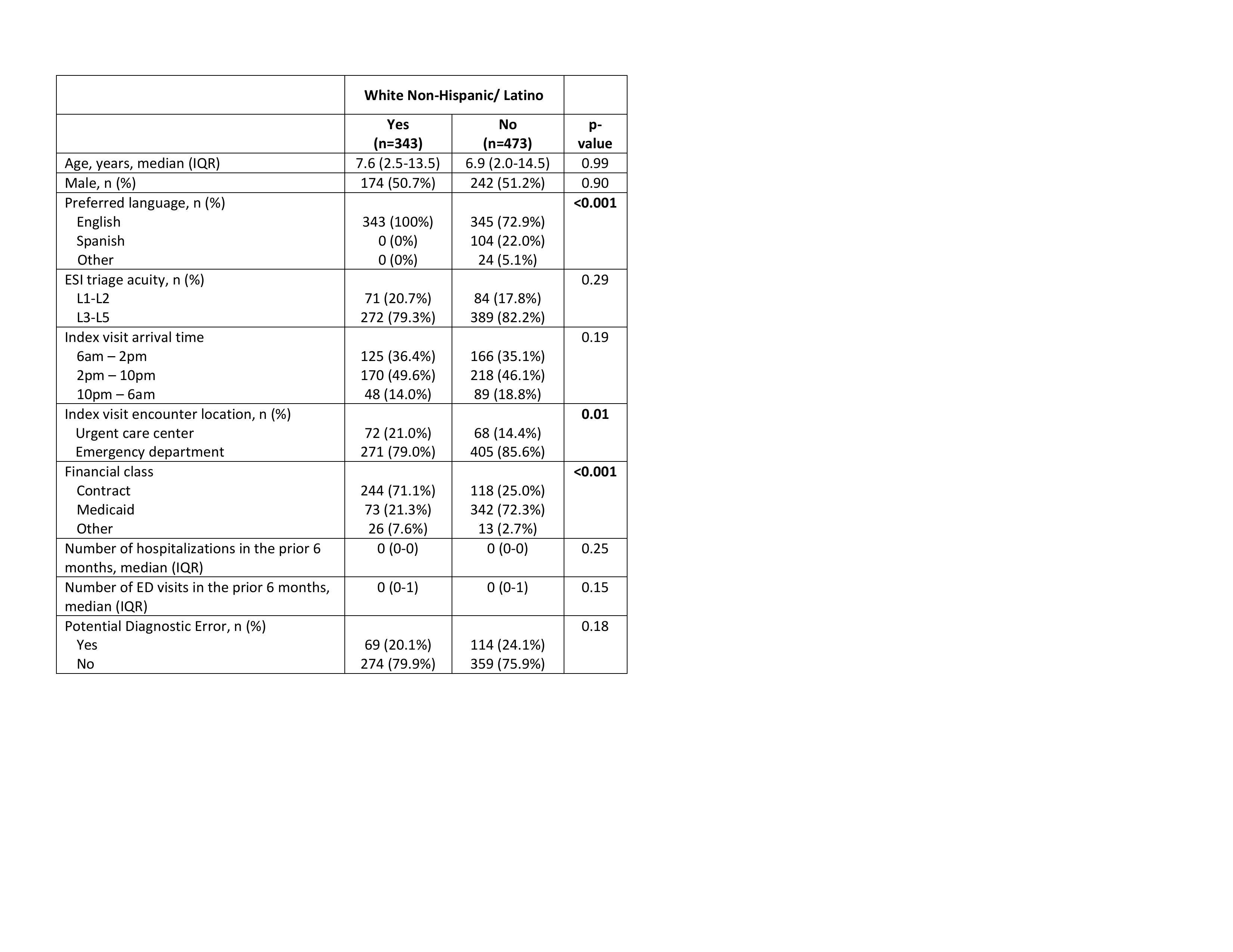Emergency Medicine: All Areas
Emergency Medicine 13
369 - Racial and Ethnic Disparities in Pediatric Emergency Department Diagnostic Errors
Publication Number: 369.404

Keren Eyal, MD, MPH (she/her/hers)
Pediatric Resident
Children's Hospital Colorado
Denver, Colorado, United States
Presenting Author(s)
Background: Diagnostic errors (DxEs) are among the most common adverse events experienced by pediatric emergency department (PED) patients. Previous studies of specific pediatric conditions (e.g., appendicitis, childhood cancer) have revealed higher rates of misdiagnosis and delays among historically minoritized racial/ethnic populations. Scant research exists quantifying racial/ethnic disparities in DxEs in the PED.
Objective: To compare proportions of PED DxEs by patient race/ethnicity. We hypothesized that rates of DxEs would differ based on race/ethnicity.
Design/Methods: E-trigger followed by manual screening identified children with unplanned admission within 10 days of an index PED/Urgent Care encounter from 1/1/2018-7/31/2022. Cases with disparate diagnoses at index encounter and hospital discharge were reviewed using the Revised Safer Dx to determine presence of DxEs. Race/ethnicity and additional demographic and encounter variables were abstracted from the electronic record. The primary outcome was proportion of DxEs by race/ethnicity. Univariate comparisons were made using chi-square for proportions and Kruskall-Wallis for continuous variables. Variables from univariate analysis (p< 0.2) plus race/ethnicity were entered into multivariable logistic regression and remained (p< 0.1) using backward selection to identify independent predictors of DxEs.
Results:
During the study period, 816 patients screened in for Safer Dx review, and a total of 183 potential DxE were identified [Table 1]. When compared to White non-Hispanic-Latino (WNH) patients, historically minoritized populations did not differ significantly by proportion of potential DxEs [Table 1]. During the index visit, WNH patients received a higher median number of diagnostic studies (p=0.02), more diagnostic work-up (p=0.03), and more frequently had the eventual correct diagnosis considered (p=0.02) [Table 2]. In multivariate logistic regression, race/ethnicity did not significantly affect the odds of diagnostic error [adjusted OR 1.20 (95% CI 0.85-1.70)].
Conclusion(s): Proportions of potential DxEs did not differ significantly by patient race/ethnicity, in contrast to previous studies of racial/ethnic disparities in healthcare. However, WNH patients did receive significantly more diagnostic work-up, and the correct diagnosis was more often initially considered. Our institution is currently working to capture patient race/ethnicity data more accurately. These results emphasize the importance of proper collection of this data to meaningfully identify possible disparities in diagnostic workup and care. 
.png)
